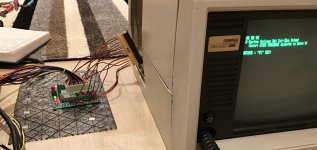The PSU for one of my old PCs is dead. It's an AT PSU with 5v, 12v, -5v and -12v outputs.
I'm thinking of adapting a relatively new ATX PSU and convert it to work as an AT PSU. The problem is that ATX PSUs, at least newer ones, don't output -5v. Any suggestions please on how to generate the missing voltage from the ATX PSU?
Thank you
I'm thinking of adapting a relatively new ATX PSU and convert it to work as an AT PSU. The problem is that ATX PSUs, at least newer ones, don't output -5v. Any suggestions please on how to generate the missing voltage from the ATX PSU?
Thank you


